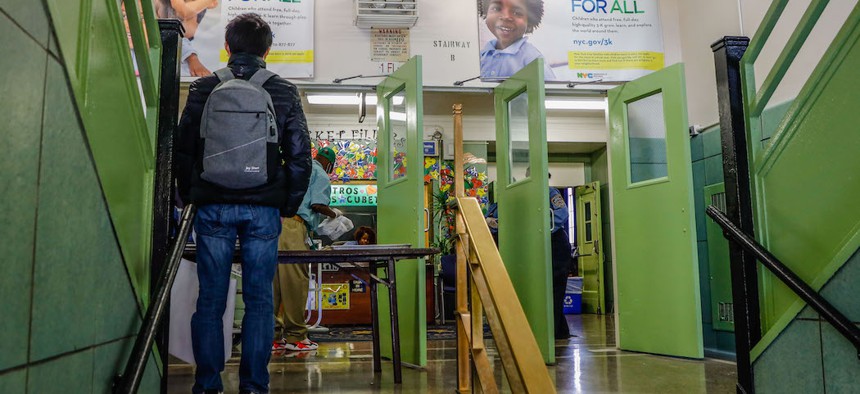In a new proposal, New York City Public Advocate Jumaane Williams called for the reopening of New York City schools to be postponed at least a month and to have elementary school students attend in-person classes first when schools do reopen.
Williams’ recommendations follow severalreportsthat suggest younger children are less likely to become seriously ill from the coronavirus and less likely to transmit the virus. “From everything we’re learning, having younger kids begin that process makes the most sense,” Williams told the Daily News. “We can use that science.”
The city’s 1,606 public schools provide child care for working parents, school lunch and a place for students to socialize and make strides in their educational development. However, it remains unclear if the benefits of reopening the schools outweigh the potential negative effects of doing so in the midst of a pandemic.Regardless of when schools reopen, health experts said it is imperative that they change to meet new safety standards to protect students, teachers and other school personnel.
On July 8, New York City Mayor Bill de Blasio and schools Chancellor Richard Carranza proposed a mix of in-person and remote learning in the fall. They said parents would also be given the option to enroll their children in exclusively remote classes. However, Gov. Andrew Cuomo was quick to remind de Blasio that he has the final say when it comes to reopening schools and will not be making any decisions until the first week of August. De Blasio has since said that no decisions regarding reopening schools will be made until the beginning of September. On July 13, Cuomo unveiled a new formula for when the state would reopen and close schools. They would not be allowed to reopen unless their region had a daily infection rate below 5% over a 14-day average. If schools were open, they would close again if the regional coronavirus infection rate exceeded 9% over a 7-day average.
While the city Department of Education has said it is looking at how to create more space in schools, developing cleaning protocols, and fixing heating, ventilation and air conditioning systems, both the city’s principals and teachers unions are unsure of how much progress has been made. The Council of School Supervisors & Administrators, the city’s principals union, criticized the department’s “alarming” lack of preparedness for reopening schools in an email to union members last week. “Yet, through no fault of your own, as each day passes without clear guidance and safety assurances, it becomes less likely that we will be ready to reopen in September,” union President Mark Cannizzaro wrote.
The city’s teachers union, the United Federation of Teachers, is also prepared to fight the reopening of schools with legal action and protests, if its leaders believe schools are not being reopened safely.
Donna Hallas, the program director of the Pediatric Nurse Practitioner Program at the New York University Rory Meyers College of Nursing, told City & State that if the city isn’t fully prepared to make the necessary updates and changes to schools by September, it may want to consider delaying the start of the school year. “Do we just forge ahead and say, ‘Well, let’s see what happens.’ … Maybe schools should wait to open until November, so we can really get all of these things (safety protocols and renovations) in place,” Hallas said.
Because COVID-19 is most likely to be transmitted in enclosed indoor spaces, Hallas said refurbishing air ventilation and filtration systems in the city’s public schools is of the utmost importance. The education department is currently looking at the airflow in classrooms but has yet to release a report or update on its findings.
Another issue that should factor into the reopening of schools, according to Hallas, is the city’s COVID-19 testing capabilities. “From day one, we haven’t had a comprehensive, efficient testing strategy,” Hallas said. “That’s a barrier (to reopening schools) because you don’t know which children are symptomatic or asymptomatic.”
However, much of what would be required to ensure the safety of students and teachers, such as heating and cooling fixes, and widespread testing and contact tracing for students, would be costly. The city’s school system is currently looking at $642 million in budget cuts next year. And on July 8, President Donald Trump threatened to cut all federal funding for schools that do not reopen in the fall, putting the fate of the city’s schools in an even more precarious position.


